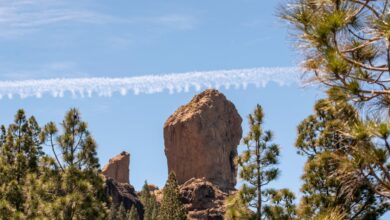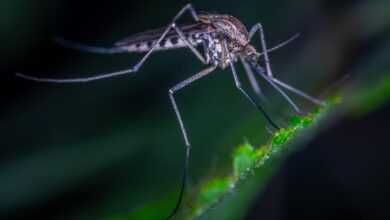The Modest Truth: What We Can (and Can’t) Do with the Weather

The image of shadowy figures, secretly manipulating the skies to unleash floods or redirect hurricanes, is a powerful one. It’s the stuff of Hollywood thrillers, but for a growing number of people, it’s a terrifying reality. Take October 2024, when Hurricane Helene wreaked havoc across the US Southeast. Representative Marjorie Taylor Greene didn’t hesitate to point fingers: “Yes they can control the weather,” she posted on X. “It’s ridiculous for anyone to lie and say it can’t be done.”
The “they” remains conveniently vague, an abstract enemy capable of wielding unknown technologies. This isn’t an isolated incident; similar claims have surged after extreme weather events worldwide, from Dubai’s deluges to Australian floods and even calls that the UK government ‘fixed’ the weather during the first COVID lockdown. Most recently, devastating floods in Central Texas ignited the conspiracy machine once more, even inspiring threats against weather radar towers.
Fundamentally, these sweeping claims are scientifically preposterous. Yet, this particular conspiracy theory, like so many others thriving in our current “New Conspiracy Age,” proves remarkably resilient. Why is it so hard to debunk? Because, woven into its grandiose tapestry of control and malice, lies a kernel of truth – a much more modest, yet undeniably real, human capacity to influence the weather.
The Modest Truth: What We Can (and Can’t) Do with the Weather
Let’s get one thing straight: humans cannot currently cause major floods, redirect hurricanes, or conjure powerful storm systems out of thin air. The sheer energy involved in these natural phenomena is far too immense for any technology we possess to significantly alter. Think of it this way: trying to stop a hurricane with a cloud seeding plane is like trying to empty an ocean with a teacup.
However, we *can* modify the weather. The critical distinction lies in the scale of what’s possible. Our capabilities are less about wielding elemental power and more about subtle nudges.
Cloud Seeding: The Reality on the Ground (and in the Air)
The most common and well-researched form of weather modification is called cloud seeding. It’s been around for about 80 years, and the basic science is pretty straightforward: small amounts of silver iodide or other materials are injected into existing clouds. These particles act as tiny nuclei, encouraging moisture to build up around them, forming ice crystals that eventually get heavy enough to fall as rain or snow.
This practice is typically employed in dry regions struggling with drought, aiming to juice up precipitation levels. And research, particularly over the last couple of decades with improved technology and statistical modeling, shows it can work. But here’s the crucial caveat: its impact is modest. We’re talking about coaxing perhaps 5% to 10% more moisture out of otherwise stubborn clouds. As Jeff French, an associate professor at the University of Wyoming, puts it, cloud seeding is “looking at making an inefficient system a little bit more efficient.”
The idea of a 50% or 100% increase, once hoped for, simply hasn’t materialized. There is “absolutely no evidence that cloud seeding can modify a cloud to the extent that would be needed to cause a flood,” French affirms. Floods require vast amounts of moisture localized over extended periods – factors cloud seeding has zero effect on.
Beyond increasing rain or snow, cloud seeding is also used to suppress precipitation or mitigate its severity. In parts of Canada, for instance, insurance companies have invested for decades in hail suppression programs, using seeding to create more, smaller hailstones, reducing individual stone size and thus damage. And yes, China reportedly used cloud seeding to help ensure a dry opening ceremony for the 2008 Olympics by making droplets stay aloft longer.
Today, the United Nations’ World Meteorological Organization notes that over 50 countries engage in some form of weather modification. China is arguably the biggest player, with a massive program aimed at agricultural relief and hail suppression. Desert nations like Saudi Arabia and the UAE are also heavily invested. Even in the US, at least nine states, primarily in drier western regions, have active programs, often contracting private companies like Rainmaker.
A Shady Past, Public Confusion, and the Rise of “They”
While the current scientific consensus on cloud seeding’s modest capabilities is clear, the path to understanding has been anything but. A checkered history of government interest, combined with public misunderstanding and intentional blurring of lines, creates fertile ground for conspiracy theories to take root.
Echoes of Old Experiments and Military Endeavors
It’s not for lack of trying that we can’t control major storms. The US government dipped its toes into hurricane alteration with Project Cirrus in 1947. Scientists seeded a hurricane, and it then took an unexpected turn, striking Georgia. Though experts later showed such trajectory changes were naturally possible, the damage was done. A GE scientist involved was “99% sure” their work was responsible, and public outrage simmered.
Later, Project Stormfury sought to weaken hurricanes (unsuccessfully), and more controversially, Operation Popeye saw the US military attempting to weaponize weather during the Vietnam War. They seeded clouds over Southeast Asia to increase monsoon rains and bog down the enemy. Whether it worked remains debated, but the Nixon administration’s denials and lies to the public and Congress certainly didn’t inspire trust.
These historical efforts, even if largely unsuccessful in their grander aims, provided undeniable evidence of governments *trying* to manipulate weather. It’s a powerful narrative hook for anyone looking for a “big bad” pulling the strings.
The Blurry Lines: Chemtrails, Geoengineering, and Political Firestorms
Further muddying the waters is the tendency to conflate legitimate weather modification research with entirely different—or entirely fictional—concepts. “Chemtrails,” for example, are a full-blown conspiracist fever dream, mistaking innocuous condensation trails from jets for nefarious chemical dumps.
Then there’s solar geoengineering, particularly stratospheric aerosol injection. This theoretical concept, designed as a potential stopgap to cool the planet by reflecting sunlight, involves high-altitude jets releasing tiny aerosol particles into the stratosphere. It’s a global climate intervention, not about inducing a local cloudburst. While its implications are vast and subject to much debate (and very few real-world experiments), it’s fundamentally distinct from cloud seeding. Yet, the imagery—”bits of stuff, dumped into the sky, with the aim of altering what happens down below”—makes it easy to lump them together.
This confusion isn’t helped by political rhetoric. Representative Greene’s “Clear Skies Act” aims to ban *all* weather modification and geoengineering. States like Tennessee and Florida have passed laws prohibiting the “intentional injection… of chemicals… into the atmosphere with the express purpose of affecting temperature, weather, or the intensity of the sunlight,” often conflating the two. Ironically, these bans are passing in states where weather modification activities aren’t even happening – places that certainly don’t need help finding rain.
The Deeper Need: Why We Seek a “Big Bad”
Ultimately, why do these theories persist, even when the science is so clear on the limitations? It often comes down to a deeply human need for simple explanations in a complex, frightening world. The climate is changing, and it’s delivering what feels like weaponized weather – more frequent, more intense, and more damaging extreme events. This reality is overwhelming, and it lacks a single, tangible villain.
As Naomi Smith, a lecturer in sociology, aptly notes, “Governments are not doing a good job of responding to the climate crisis… It’s hard to hold all this complexity, and conspiracy theorizing is one way of making it intelligible and understandable.” When disaster strikes, it’s far easier to point a finger at a sinister “they” with unknown technology than to grapple with the diffuse, long-term impacts of climate change, the inertia of political systems, and our collective inaction.
The “flashier branding” of some weather modification companies—Rainmaker’s former slogan “Making Earth Habitable” comes to mind—doesn’t help. While intended to highlight potential, it can inadvertently feed into grander, less modest interpretations of their capabilities, further fueling public misunderstanding.
Navigating Truth in a Stormy World
The weather control conspiracy theory is a potent blend of fragmented truths, historical missteps, current scientific endeavor, and a profound human need for a culprit. We live in an era of unprecedented environmental upheaval, where climate change delivers increasingly disastrous events, yet many in power do little to mitigate the impacts. In this vacuum of effective action and clear explanation, the “big bad” of weather manipulators becomes a tempting, albeit false, target.
Unraveling these theories requires more than just scientific facts. It demands an understanding of human psychology, a critical look at historical narratives, and a commitment to clear communication. As extreme weather becomes our new normal, distinguishing between the modest science of weather modification and the fantastical claims of weaponized weather will be crucial for fostering informed public discourse and addressing the real challenges of our changing planet.





